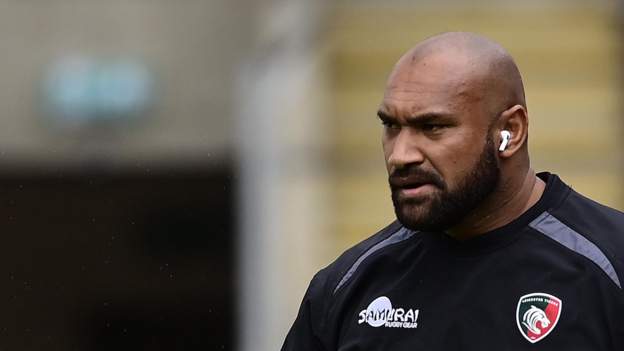[ad_1]
Ben Stokes isn’t one for soundbites. But on the eve of his sixth Test as men’s captain, one which England need to win to square the series with South Africa, he leant on what is becoming a familiar crutch.
“I would never ask my team to do something I wouldn’t”.
It is an admirable stance for a skipper to take, and perhaps Stokes is in the unique position as an allrounder where he can act it out. The short-ball tactic England employ – with mixed results – is basically all on him, as it was in the previous regime under Joe Root.
With age, the effects of these bumper spells, the extra effort, and the multiplying force put through that front leg wear a little heavier on Stokes, particularly on his left knee. However, such is his belligerence that even concern from good friend and former England cricketer Steve Harmison was dismissed as unnecessary. “It is something I can manage.”
Interestingly, discussions on how he bowls himself and the associated risks did not elicit the familiar nugget. It was his batting: particularly the almost cavalier approach to the craft he has adopted under Brendon McCullum. There are shades of his familiar two-step down the ground routine in among some outrageous shots that, so far, have reaped 259 runs at an average of 37 in this summer’s home Tests.
It is not bad, but certainly short of his capabilities. There was a period from the start of 2019 to the end of 2020 when it seemed we were entering a new era of Stokes, the batter: he averaged 50 across 18 Tests, with four hundreds among them. At times, he looked the most technically accomplished in the line-up, which is saying something, given he sits next to Root.
And yet at the same time, to focus on numbers and aesthetics is to miss the point. Stokes’ method, however madcap, is his way of embodying the extreme of how he wants the batting line-up to operate.
“I know when I play well it’s very good for the team,” he answered when asked if, perhaps, there is a regression to the norm. “Me being the leader, I would never ask my team to do something I wouldn’t, but there’s a bigger picture to that if that makes sense.
“I’m sure there will come a time when it does have to mellow down a little bit but at this time right now, I feel I’ve got a big responsibility to be that person hitting the message home and almost people watching going like ‘he’s able to go out and do that in a difficult situation’.”
If you will allow for some extrapolation with wildly different sample sizes, Stokes’ mantra is clear to see. Overall, he attacks deliveries twice as often as he did across the three home summers between 2019 and 2021. The biggest expansion is the approach to full deliveries, going after them 42.42% of the time compared to 11.54% in the above period.
Similarly, he is striking length balls more than twice as often. It is no surprise his strike rate of 78.72 is comfortably his highest in an English season.
After a trio of scores – 54, 46 and 75 not out – in his first four knocks of the summer, there have been plenty of starts that in the old days of a few months ago would have been filed under “thrown away”. Their purposes, however, were not for nothing, either shocking bowlers and the field for the benefit of the guy at the other end, or coming in next.
Even the twin 20s in the innings defeat at Lord’s had a little more to them: the first innings a necessary counter, the second a hit-out as the last viable option for victory before being caught at midwicket trying to strike Kagiso Rabada for six, thus becoming the ninth wicket to fall.
Maybe because cricket is like this, but it is hard not to wince at the thought of Stokes wanting to be the canary down the mine, given he strikes gold so often. At the same time, having given so much of himself to England over the years and still only coming away with sub-par results – one win in 17, anyone? – perhaps it is understandable that he has chosen to sacrifice himself in other, slightly less painful ways.
And it is certainly working to a point, with four wins and an overall run rate of 4.50 which is the highest of any team to play five or more games in a season.
Ahead of the second Test against South Africa, nursing a 0-1 scoreline, Stokes took the opportunity to talk the talk once more, fully aware he will walk it from 11am on Thursday, and hopefully get others to follow as resolutely as they had before.
“It’s about the language we speak as well in the group to set the tone of what we’re about, because when you are up against the wall – as we were in the first innings – it’s a lot easier to take a step back and go into your shell a bit more,” he said.
“That’s something we don’t want to creep into this team at the moment. That game in particular we all hold our hands up and know we didn’t perform to where we wanted to, and there will be occasions when similar situations happen. But if they go out there with the confidence of having the backing of the dressing room is very powerful I feel.”
Indeed, this match feels like more of an acid test than last week. Then it was about seeing how much of the ethos sustained after a long break. Now it will be about how much those players still believe after a first defeat.
As for Stokes? Well, he might find himself in an interesting conundrum. Because as much as he still wants to lead the way, doing so here, with the series on the line, might require a more selfish approach.
[ad_2]




